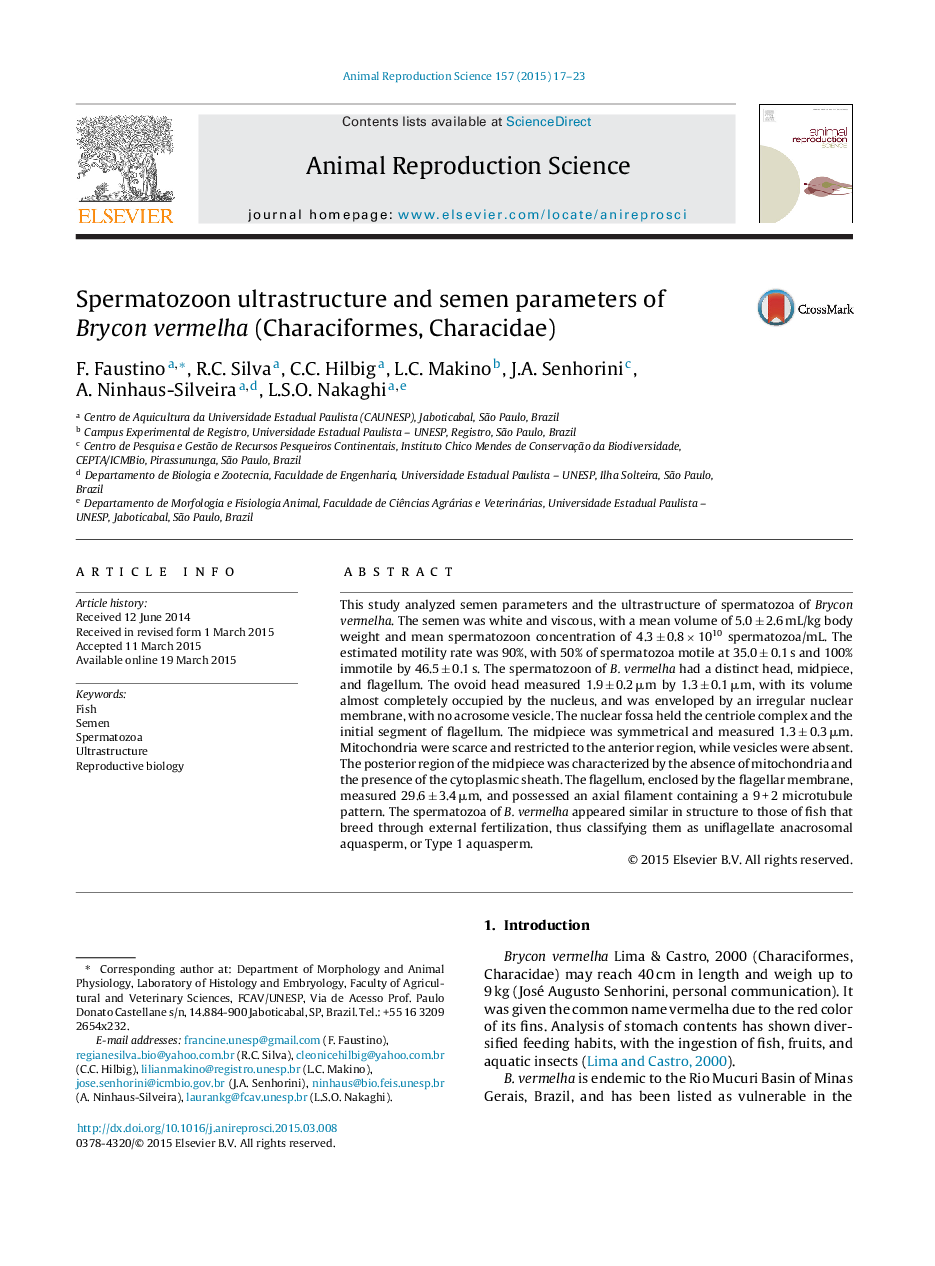| کد مقاله | کد نشریه | سال انتشار | مقاله انگلیسی | نسخه تمام متن |
|---|---|---|---|---|
| 2072771 | 1544720 | 2015 | 7 صفحه PDF | دانلود رایگان |

• The spermatozoa of B. vermelha showed three parts (head, midpiece, flagellum).
• The head was ovoid and almost completely taken by the nucleus.
• The midpiece possessed mitochondria in the anterior region.
• The flagellum consisted of nine pairs of peripheral and two central microtubules.
• The spermatozoa of B. vermelha possess characteristics of external fertilization.
This study analyzed semen parameters and the ultrastructure of spermatozoa of Brycon vermelha. The semen was white and viscous, with a mean volume of 5.0 ± 2.6 mL/kg body weight and mean spermatozoon concentration of 4.3 ± 0.8 × 1010 spermatozoa/mL. The estimated motility rate was 90%, with 50% of spermatozoa motile at 35.0 ± 0.1 s and 100% immotile by 46.5 ± 0.1 s. The spermatozoon of B. vermelha had a distinct head, midpiece, and flagellum. The ovoid head measured 1.9 ± 0.2 μm by 1.3 ± 0.1 μm, with its volume almost completely occupied by the nucleus, and was enveloped by an irregular nuclear membrane, with no acrosome vesicle. The nuclear fossa held the centriole complex and the initial segment of flagellum. The midpiece was symmetrical and measured 1.3 ± 0.3 μm. Mitochondria were scarce and restricted to the anterior region, while vesicles were absent. The posterior region of the midpiece was characterized by the absence of mitochondria and the presence of the cytoplasmic sheath. The flagellum, enclosed by the flagellar membrane, measured 29.6 ± 3.4 μm, and possessed an axial filament containing a 9 + 2 microtubule pattern. The spermatozoa of B. vermelha appeared similar in structure to those of fish that breed through external fertilization, thus classifying them as uniflagellate anacrosomal aquasperm, or Type 1 aquasperm.
Journal: Animal Reproduction Science - Volume 157, June 2015, Pages 17–23